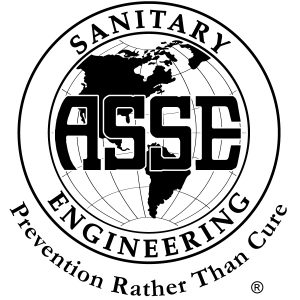What are Cryptosporidium and Giardia, and how do they spread?
Cryptosporidiosis and giardiasis are two common gastrointestinal diseases caused by ingestion of contaminated water with cryptosporidium or giardia parasites, which are swallowed in human and animal intestines and subsequently transmitted to the environment by food or human by direct or indirect contact with the faces of infected humans or animals.
The difficulty in healing
Cryptosporidium and giardia are protected by a chlorine-resistant outer shell, thus allowing the parasites long periods of living outside their original host. Giardia cysts can survive for several months in cold water, while cryptosporidium oocytes can survive for months in the soil in cool conditions even up to one year, even in low turbidity water
Ease of distribution
The numbers are worrying because millions of infectious cysts can be emitted in one single bowel movement,
Even swallowing a small amount of water
6 infectious cysts are enough to infect a person, so understanding why an infected person becomes infectious due to diarrhea, a leaking baby diaper or "intestinal accident" so common in swimming pools, a spa or a small lake can be a potential health risk.
Here are some reported cases
In 2012, there were 15,223 reported cases of giardiasis and 8,008 cases of cryptosporidiosis
The source of "efficiency" distribution
Drinking water is the most common method of distribution, the parasites that cause cryptosporidiosis and giardiasis are found in almost every source of water, including:
Streams of water
water reservoirs
Lakes
swimming pools
spa
Is public water immune?
Although raw water such as lakes and streams is a clear source of pollution, public water supplies are certainly not immune to these parasites, which is why our tap water can also contain these parasites.
According to the University of Ohio
These parasites are not effectively controlled by chlorine or other disinfectants. Chlorine used to kill bacteria in urban water supplies is not sufficiently concentrated, or for a sufficient period of time, to destroy the parasites, and if it is Joseph at the right level, then people will not be allowed to drink the high chlorine concentrations healthily.
It is mechanical filtration of water that is done in the treatment and control of these parasites; Therefore, clean plans for clean water are essential for protection. When municipal water is not available, boil the accessible water for at least one minute before drinking.
Saskatchewan Security Agency
These two parasites [Cryptosporidium and Giardia] are found in lakes and streams, and some groundwater sources are under the direct influence of surface water.
Communities that receive their drinking water from these water sources, and do not properly treat their water, can introduce parasites into their water system. These organisms are highly resistant to chlorine and other antiseptics used to infect bacteria and viruses in drinking water.
Also, Cryptosporidium and Giardia are small enough to undergo central and routine mechanical filtration.
Were any outbreaks extensive?
For example, in April 1993 in Milwaukee, the biggest epidemic occurred in the water.
About 403,000 Milwaukee residents suffered from watery diarrhea due to cryptosporidium eggs found in the city's public water supply.
Four thousand were hospitalized and more than 100 died. 15 One of the city's water plants was temporarily closed, but until the public was warned not to use water for direct drinking, the city "celebrated" for more than two weeks.
The city of Milwaukee has since spent over 200 million$ to upgrade the city's water systems.
The turbidity level (NTU) is now constantly measured, and improved filtration systems have been installed for all city water filtration stations.
The 1993 crisis demonstrated the need for greater awareness and understanding of cryptosporidium as a public health risk. Other identified lessons and needs included source and finished water testing for cryptospheridium, environmental research management, and the important role of communication in communicating important public health messages during the outbreak.
What are the symptoms and health effects of cryptosporidiosis and giardiasis?
Similar to food poisoning or "stomach upset", both diseases show very similar symptoms, which include:
A typical odor of watery or diarrhea
Abdominal pain or pain in general
Lack of appetite
Weight loss
swelling
Nausea and vomiting
Slight fever
tiredness
Gases
Headaches
Symptoms of Cryptosporidiosis may appear within a week after infection and last up to two weeks, although they may come and go regularly for up to a month. There is no specific treatment for cryptosporidiosis, but there are drugs available to help with the symptoms.
Giardia symptoms can last longer – up to three weeks – and can last two to six weeks, and sometimes longer. Treatments available for
Some people have parasites in their bodies but don't seem to have any effect.
But if there is a fear of giardiasis, it is always a good idea to seek the advice and treatment of your doctor or professional.
Who is at high risk for severe or severe cases of cryptosporidiosis or giardiasis?
Again, many people are infected by these two parasites, not paying attention to symptoms or feeling sick.
However, the Saskatchewan Security Agency notes that some groups such as children and pregnant women are more likely to develop a more serious illness.
Here is the group of people at high risk of severe disease following the parasites:
Carriers of AIDS
Cancer Patients
Organ or bone marrow patients taking medication to suppress the immune system
People born with a weak immune system
Are there any more common cases at certain times of the year?
The cases reported are usually months with the hot air, with more people being exposed to parasites while enjoying the water for recreational purposes. In 2011 2012, the CDC reported the onset of giardiasis from early summer to early fall. During the same period, the onset of cryptosporidiosis symptoms increased 4.4-fold than the end of summer.
How can I reduce my risk of getting infected?
The University of Ohio suggests doing the following to reduce your chances of suffering the effects of giardiasis and cryptosporidiosis:
Outdoors
Wash your hands with soap and warm water before eating or drinking.
When swimming in a lake, river or stream try not to swallow the water
Drink water from sources such as municipal water whenever possible.
If the treated water is not available, boil water for at least one minute before drinking
At home
Wash your hands with soap and warm water before eating or drinking
Wash all fresh fruits and vegetables under running water from a treated source.
When drinking milk and juice, use only pasteurized products.
Use a vegetable brush to scrub the exterior of fruits and vegetables.
Be aware of public boilers and follow the recommendations
Also, for those whose vacation idea involves an afternoon around the swimming pool issue of their hotel, the CDC notes that one-third of the infestation occurred from 2000 to 2014 occurred in hotel pools or hot tubs, according to a report published in the Morbidity Report And weekly CDC mortality.
Therefore, the CDC suggests taking the following precautions:
Do not swim or let your children swim if he is sick with diarrhea.
If Crypto is the cause of diarrhea, wait up to two weeks after stopping the diarrhea to go swimming again.
Looking at the issue from an angle
These organisms are not bacteria or viruses, but parasites with complex life cycles. Outside of the host body, organisms are in the stage of cysts, which is like a plant seed or similar to a microscopic egg. The size of Giardia cyst is about 8 to 14 microns, whereas, Cryptosporidium oocytes are usually 4 to 6 microns in diameter. (Note: 1 micron = 0.001 mm = 0.00004 inches), which is too small to be seen by the naked eye.
These organisms have been responsible for more than 100,000 cases of waterborne morbidity since 1979.
These are not new organisms and in fact Van Leeuwenhoek describes Giardia cysts first appeared in 1681, but these organisms have not been identified as causes of disease until the last two decades.
Disease:
Upon ingestion, the stomach acids cause cysts and the organism begin to multiply in the gut.
It has been shown that at least 10 Giardia cysts cause an outbreak of giardiasis, yet the minimum number of oocysts for cryptosporidiosis is unknown.
The disease produces symptoms that mimic other gastrointestinal problems and the common symptoms are persistent diarrhea, weight loss, abdominal cramps, nausea and dehydration. Generally, symptoms start within a week after exposure and the acute symptoms can last up to two weeks, but chronic symptoms can last up to two months. With proper care and our natural immune system, the illnesses are not fatal, but these illnesses can be life-threatening for AIDS patients, young children, the elderly or anyone recovering from major surgery.
Good to know:
If one of the household members is diagnosed with one of these diseases, it is important to check all members of the household.
It is recommended that one of the individuals may be symptomatic (showing no signs of illness) leading to these organisms.
It is also important to note that the side effects of the drugs used to treat these diseases tend to have similar symptoms to the disease and that some people have reported being lactose intolerant after the illness.
Adherence path:
This disease cannot be transmitted through incision or exposure to blood products. The main route of transfer is essentially any fecal or oral fluid. I know the statement "feces here", the route seems strange and unlikely, but here are some examples: Drinking water from contaminated water supply as a result of waste recycling systems, or improperly utilized sludge. Groundwater is not a common route of contamination, but surface water can be a common route. Is that why it's important to know your water? And the source of your drinking water.
For example, Mama changed her baby diapers and returned to canned goods for the church picnic, and the man purchased the last of the canned goods, which would include any personal contact with fecal matter, contaminated soil, or pet hair containing the cysts.
Sex Path: This is an existing path when you are dealing with anal-oral sex.
Overall, the most common route of distribution is through contaminated water consumption and unintentional transfer to Partner.
Nature lovers' vulnerability:
"Backpacking Disease:" Hikers and nature lovers would drink water from the pure mountain spring, and then get the disease. Most available water sources (rivers, streams, springs, etc.)










